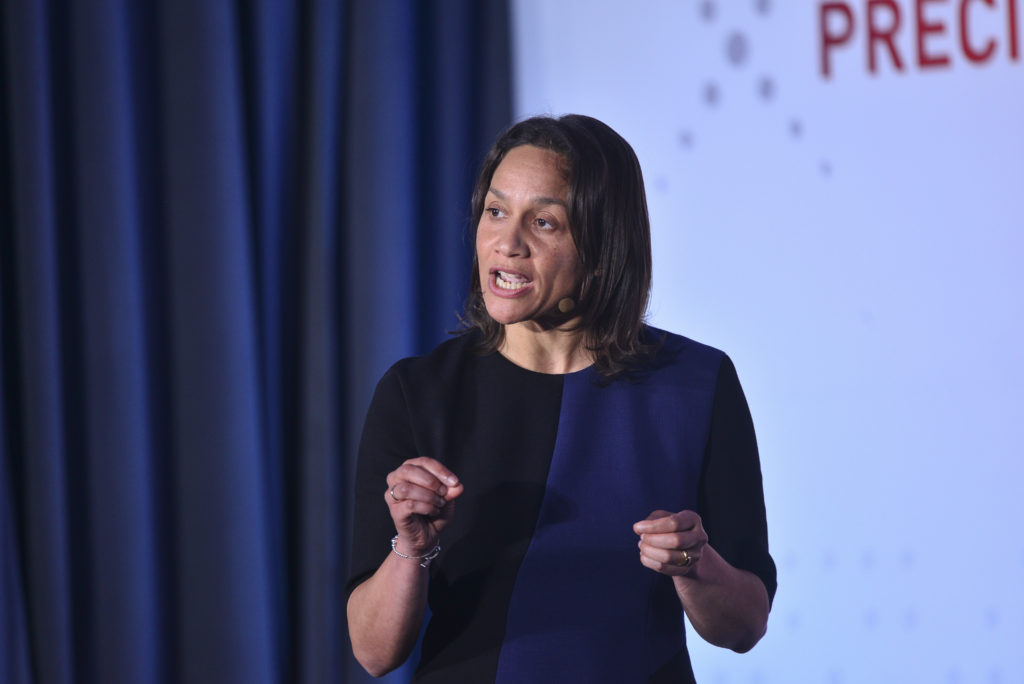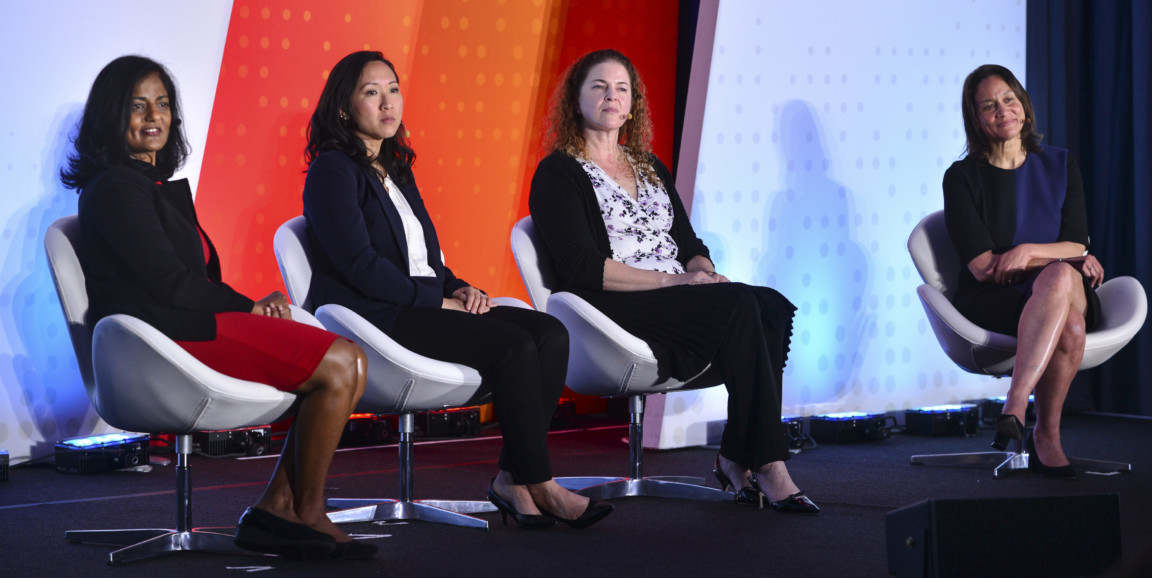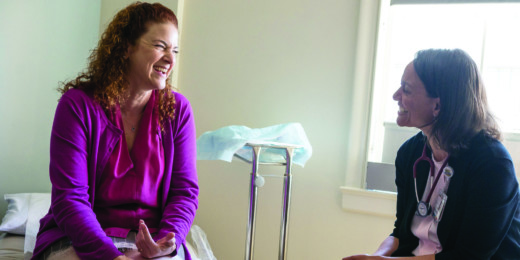From the stage, Latha Palaniappan, MD, looked out at the audience of the Big Data in Precision Health conference and made a request.
Raise your hand if you've ever had a genetic test, she said. Now keep your hand up if you've discussed those results with your doctor.
"The results in the studies we've done are similar to this room," said Palaniappan, Stanford Medicine's scientific director of precision genomics and pharmacogenomics in primary care. "About one third of people have had genetic testing or pharmacogenomic testing, and only about a third of those people discussed it with their doctor."
She and her colleagues are looking to increase that number, Palaniappan said. They want to integrate genetic testing that reveals disease risk and medication reactions, along with other patient health data, more directly into primary care -- and they demonstrated a way to do it through a Stanford Medicine pilot project called Humanwide.
The project was the subject of a half-hour presentation at the conference on Wednesday. Palaniappan joined Megan Mahoney, MD; Nancy Shin, PharmD; and Humanwide participant Debbie Spaizman to discuss the model's design and lessons learned.

Over the course of a year, primary care teams partnered with 50 patients to collect data on factors known to affect health -- from DNA to lifestyle -- and apply that information to create customized plans meant to help individuals meet their personal health-related goals. The patients regularly communicated virtually, by phone and in person with a core team of health professionals and had access to care coordinators, nurses, a clinical pharmacist, nutritionist and behavioral health specialist.
The results included "incremental gains and small wins" for each patient, as Palaniappan described it: half of the participants prevented or improved management of chronic illness; about a fourth changed medications to use drugs that were more effective for them; and for five women, an increased risk of breast cancer was identified and addressed.
Mahoney, Stanford Medicine's chief of general primary care, led the project. She said Humanwide helped care teams treat patients more proactively and precisely. "We combined the high-tech with the high-touch in an intervention that can provide truly holistic care to patients in a way that I know a lot of us as clinicians and as patients would desire," Mahoney said.
As part of Humanwide, patients were issued a blood pressure cuff, glucometer and scale to track health metrics at home, along with a pedometer. Shin, a clinical pharmacist, monitored the readings, which were automatically sent to their electronic health records. She worked with patients to take action when merited, including adjusting medications, starting or discontinuing medicines, she said.
"We also used those data points as touch points," Shin said. "If patients were doing well, if they were meeting their blood pressure goals or catching up to the right amount of steps on their pedometer, it was an easy way to reach out, connect with them and give them a word of encouragement."
Palaniappan oversaw the genetics testing component of Humanwide. It included family history assessments, testing for risk of cancer and other diseases, and a pharmacogenomic evaluation that analyzed how more than 400 medications would affect individual patients based on their biology.
"Twenty-five percent of the time we were able to make a recommendation on either a current or future, predicted medicine that might need to be changed based on pharmacogenomic results," Palaniappan said.
Most often, changes were suggested for statins, antidepressants, anti-anxiety medications and medications involved in care for cancer or heart disease, she said.
For Spaizman, the Humanwide project helped her find out -- ahead of two surgeries --why Vicodin didn't work well for her as a pain reliever. Her doctors were able to prescribe a medication that was more effective for her as she recovered from the operations. Additionally, Spaizman's doctors determined from a family history assessment that monitoring for signs of breast cancer should be increased.
"I had a lot of conversations that wouldn't have ordinarily come up," Spaizman said. "Getting to spend as much time with my doctor as I did was an added bonus."
Photos by Rod Searcey; Latha Palaniappan, Nancy Shin, Debbie Spaizman and Megan Mahoney shown at top






